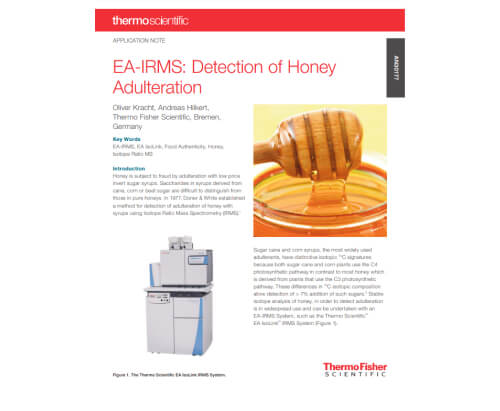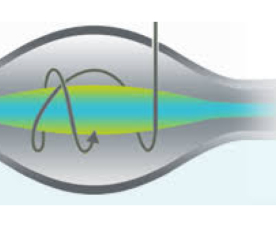LC-MS is becoming the most widely used analytical technique due to its broad scope of applications, fast method development and the technical advances that are driving a new era in research and routine labs worldwide.
GC-MS, a workhorse of routine labs worldwide is still used due to its operational symplicity, large databases of compound spectra and low running costs. Thermo Scientific application portfolio proposes novel uses for this tried and tested analytical approach.
ICP-MS, a recently developed hyphenated approach joins two analytical techniques into an unprecedented approach in elemental analysis. Thermo Scientific applications detail on the setup and results achieved through use of ICP-MS.
IC-MS is a new approach to analysis of very polar compounds, solving problems that demanded extensive sample preparation and were dificult to set up and perform repeatable analyses. Although the main application area are polar pesticide analyses, IC-MS is developing into a versatile and efficient analysis technique, used in environmental research and biopharma.
Thermo Fisher Scientific isotope ratio mass spectrometry (IRMS), used for analysis of stable isotopes of hydrogen, carbon, oxygen, nitrogen and sulphur has a wide application range and can unravel useful information in areas such as forensics, routine doping control, food authencity, environmental and paleoclimatological research.
Widely used in metalurgy, glow discharge mass spectrometry (GD-MS) is a reliable analytical technique that can be used for sub-ppb level analysis of almost all elements in conductive and semiconductive materials.
Mass Spectrometry Application Notes
Available in countries :
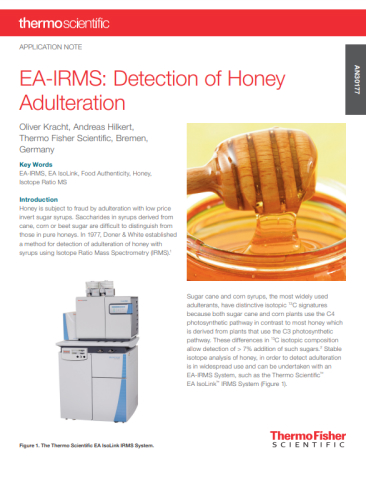
EA-IRMS:Detection of Honey Adulteration
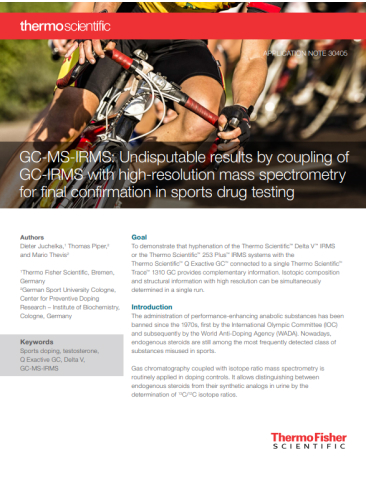
GC-MS-IRMS:Undisputable results by coupling of GC-IRMS with high-resolution mass spectrometry for final confirmation in sports drug testing
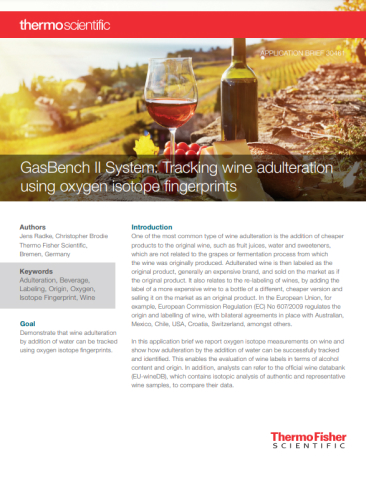
IRMS – GasBench II sistem: Tracking wine adulteration using oxygen isotope fingerprints

LC-IRMS: Authenticity Control of Honey Using the Thermo Scientific LC IsoLink LC-IRMS
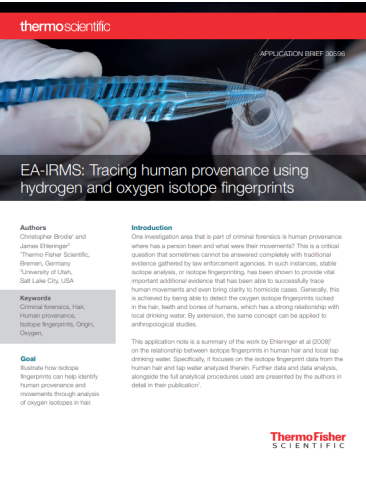
EA-IRMS: Tracing human provenance using hydrogen and oxygen isotope fingerprints

IRMS: supporting the Nitrate Directive by using isotope fingerprints for detecting the sources of nitrate pollution
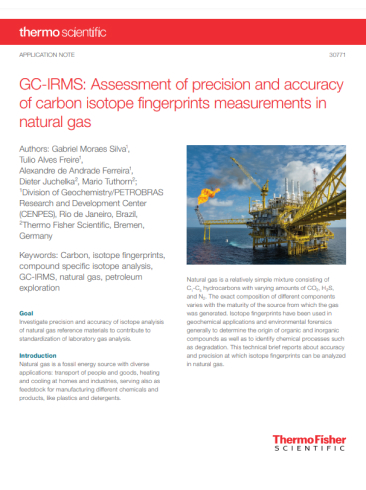
GC-IRMS: Assessment of precision and accuracy of carbon isotope fingerprints measurements in natural gas
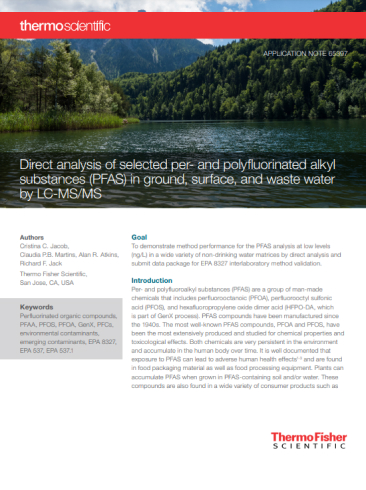
LC-MS: Direct Analysis of Selected Per- and Polyfluorinated Alkyl Substances (PFAS) in Ground, Surface, and Waste Water by LC-MS

LC-MS: Analysis of nine N-nitrosamines using
liquid hromatography-high resolution,
accurate-mass mass spectrometry
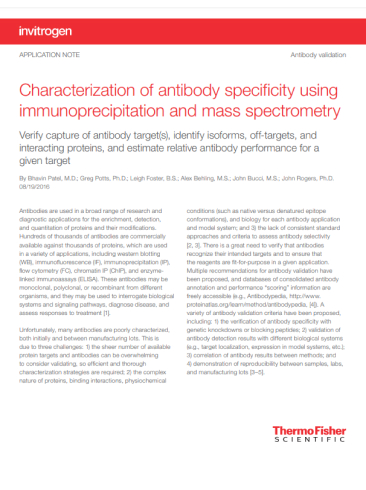
LC-MS: Characterization of Antibody Specificity Using Immunoprecipitation and Mass Spectrometry
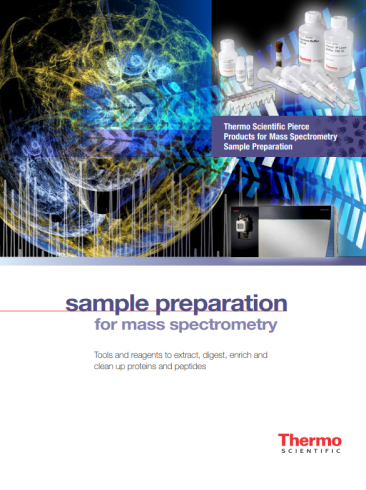
LC-MS: A Versatile Mass Spectrometry Sample Preparation Procedure for Complex Protein Samples
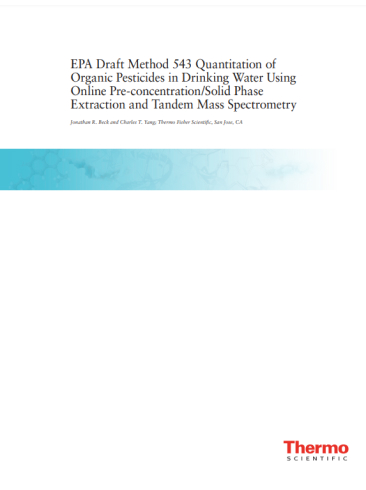
LC-MS: EPA Method 543 – Quantitation of Organic Pesticides in Drinking Water Using Online Pre-concentration/Solid Phase Extraction and Tandem Mass Spectrometry
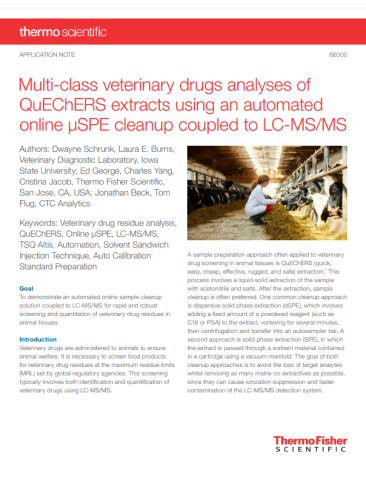
LC-MS: Multi-class veterinary drugs analyses of QuEChERS extracts using an automated online μSPE cleanup coupled to LC-MS

LC-MS: simple and rapid analysis of chloramphenicol in milk by LC-MS
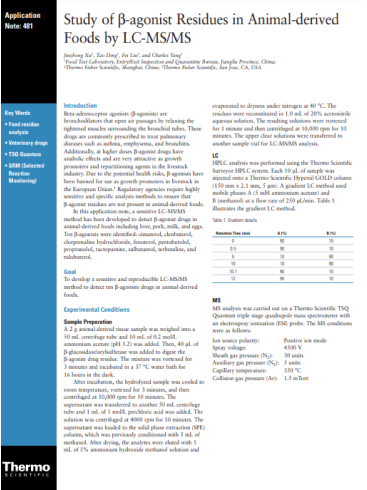
LC‑MS/MS: Study of β-agonist Residues in Animal-derived Foods by LC‑MS/MS
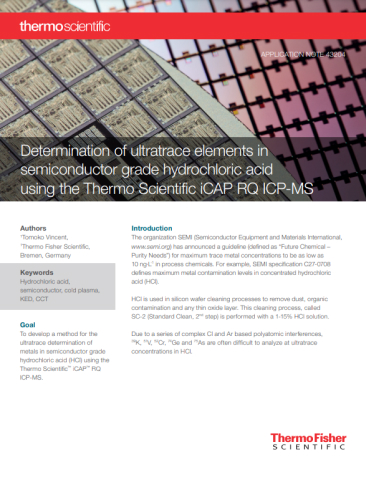
ICP-MS: Determination of ultratrace elements in
semiconductor grade hydrochloric acid
using the Thermo Scientific iCAP RQ ICP-MS
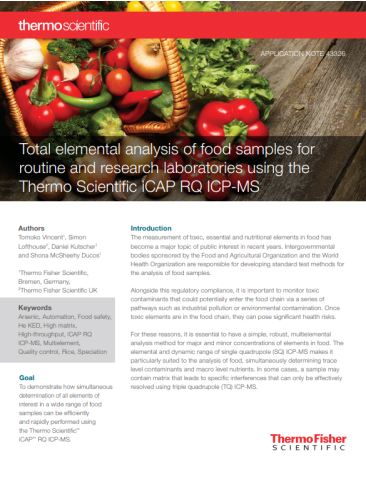
ICP-MS: Total elemental analysis of food samples for
routine and research laboratories using the
Thermo Scientific iCAP RQ ICP-MS
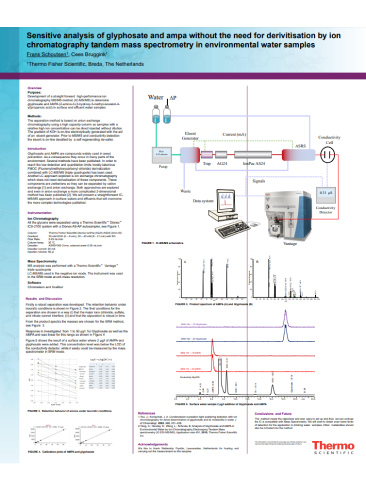
IC-MS: Analysis of Glyphosate and AMPA in Environmental Water by Ion Chromatography Electrospray Tandem Mass Spectrometry (IC-ESI-MS/MS)

GC-MS/MS: Consolidated GC-MS/MS Analysis of OCPs, PAHs, and PCBs in Environmental Samples
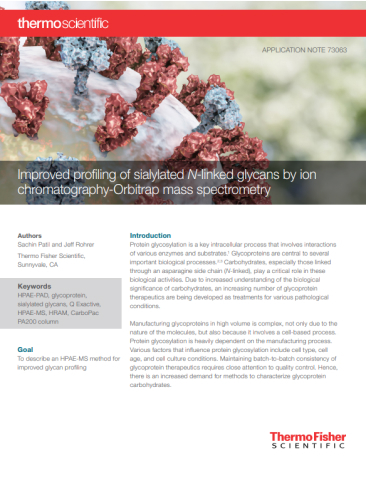
IC-MS: Improved Profiling of Sialylated N-linked Glycans by Ion Chromatography-Orbitrap Mass Spectrometry

GD-MS: GD-MS Analysis of sulphur at the ultra-trace Level
